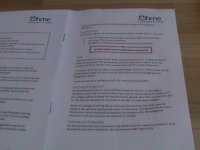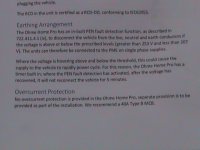Lovemyev
Distinguished Member
It very much looks like the older “Dumb Rolec” unit like I have.
The green trim around the RCBO is the give away, and we all know how unreliable them Rolec branded trip switches can be !.
If it is the older Rolec dumb unit, there is no dip switches inside of the case that could be used to reduce the power.
They are pretty basic inside, only having three major components.
There is the main RCBO trip switch a contactor and a mode 3 communication module that is rated for both 16 & 32 Amps.
Is this the issue I would ???.
If it has the original tethered type 2 cable, check for writing on the charging gun.
on the charging gun.
It should have its details printed on gun, stating the handling capacity.
It should read 7 Kw / 32 Amps.
The type 2 cable itself can be rated at either 7 Kw 32 Amps or 16 Amps 3.5 Kw which will reduce the charge also via a resistor.
It would be interesting to see an Amp clamp fitted to check on the incoming power first and then the output power from that Rolec to the car.
The 2 Kw’s it’s producing now is about the same as using the three pin Granny lead !.
Something is badly wrong somewhere.
The green trim around the RCBO is the give away, and we all know how unreliable them Rolec branded trip switches can be !.
If it is the older Rolec dumb unit, there is no dip switches inside of the case that could be used to reduce the power.
They are pretty basic inside, only having three major components.
There is the main RCBO trip switch a contactor and a mode 3 communication module that is rated for both 16 & 32 Amps.
Is this the issue I would ???.
If it has the original tethered type 2 cable, check for writing
It should have its details printed on gun, stating the handling capacity.
It should read 7 Kw / 32 Amps.
The type 2 cable itself can be rated at either 7 Kw 32 Amps or 16 Amps 3.5 Kw which will reduce the charge also via a resistor.
It would be interesting to see an Amp clamp fitted to check on the incoming power first and then the output power from that Rolec to the car.
The 2 Kw’s it’s producing now is about the same as using the three pin Granny lead !.
Something is badly wrong somewhere.

